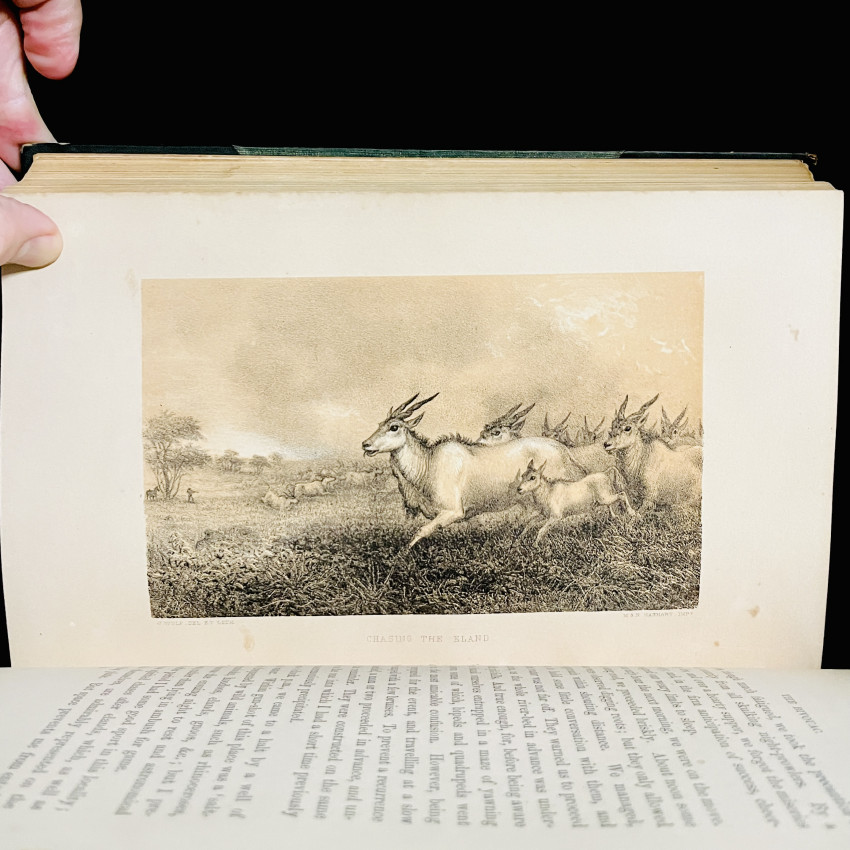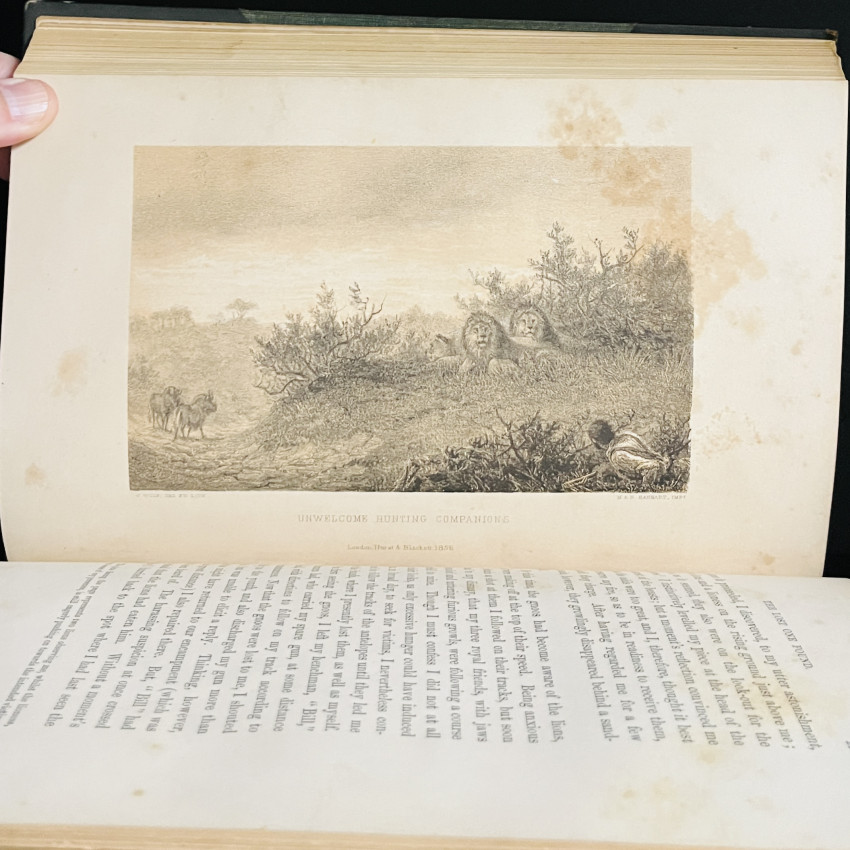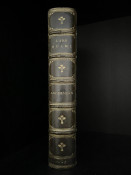Andersson’s first book, LAKE NGAMI, was published in London in a beautiful and expensive edition, but the American first edition was less impressive in every way.
This copy of the London first edition has been rebound and the outer hinges are cracked, with wear to spine and corners. Large fold-out map has closed tears, repaired, and linen-backed.
The numerous lithographic illustrations are notable for their high-quality production.
Andersson is "perhaps the most extraordinary visitor to Namibia in the 19th century" (Tonchi, p. 24).
From Karl Johan Andersson was born on 4 March 1827 in Sweden. He was the illegitimate child of the British bear hunter Llewellyn Lloyd and Lloyd's Swedish servant.
Andersson grew up in Sweden. Early in his life he went on hunting expeditions with his father, experienced Swedish nature and started a collection of biology specimens.
In 1849 he departed for London, intending to sell his collection to raise money for travels around the world. In London he met with the explorer Francis Galton, with whom he organised an expedition to Southern Africa. On midsummer day in 1850 they arrived at the Cape of Good Hope and then travelled to Walvis Bay, in modern-day Namibia. They then trekked into the interior, at the time little explored by Europeans. They intended to reach Lake Ngami, but failed on that expedition.
Galton returned home to England, while Andersson stayed in the area and reached Lake Ngami in 1853. In 1855 Andersson returned to London, where he published his first book LAKE NGAMI, in which he describes his travels. He returned to Africa the same year.
Back in south west Africa, Andersson was hired as manager for mines in what was then called Damaraland and Namaqualand. However, he only held the position for a brief time, and continued his explorations. In 1859 he reached the Okavango River, an expedition that he recorded in his book THE OKAVANGO RIVER.
After his return, he travelled to the Cape, where he married. Andersson and his wife settled in Otjimbingwe (in modern central Namibia).
Andersson had repeated financial problems. Even though his main interests were exploration and natural history, he often needed to earn money through trade and hunting. He lacked the money needed to publish his books and Galton declined to lend him any.
Andersson ultimately launched several ventures in Damaraland, including a copper mining scheme. He was briefly elected Chief of the Damara in 1864, but he was severely wounded in battle against the Nama Hottentots.
In 1867, despite serious illness due to his battle wound, Andersson travelled north towards the Portuguese settlements in modern Angola, in order to establish a better trading route to Europe. He was unable to cross the Cunene River, so he had to turn back. His condition had worsened during his journey to the Cunene and, on the return journey, he died on 9 July 1867. He was buried by another Swede, Axel Eriksson.
After his death, Andersson's wife and children continued to live in Africa, in the Cape Colony. (Wikipedia and galton.org)
Posthumously, Andersson's father, Lloyd, published notes from some of his son's exploration and hunting expeditions in the book THE LION AND THE ELEPHANT, as well as Andersson's last book, NOTES OF TRAVEL IN SOUTH AFRICA.
It has also been said of Andersson: "Few, if any, [explorers] give so full and complete an account of Namaqualand, Damaraland, and the Ovampo country and the description of the fauna of these countries is absolutely unequalled." (Mendelssohn). "A cornerstone book of African hunting in the middle of the nineteenth century." (Czech)
This book is located in the USA. Shipping overseas will cost $45. We are happy to answer any questions: [email protected]
- Size: 8vo
- Sold By: Springbok Books
- Contact Person: Wade Burgess
- Country: United States
- Email: [email protected]
- Telephone: 1-505-382-2875
- Preferred Payment Methods: Wire or bank transfer / Money order / Bank check / Personal check / PayPal with a 5% surcharge / PayPal Friends & Family at 0% surcharge
- Trade Associations: AA Approved














































